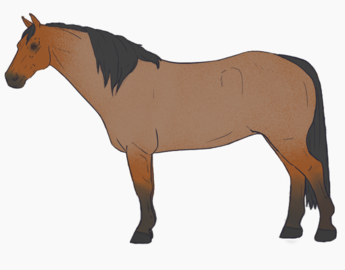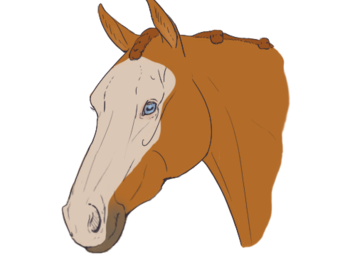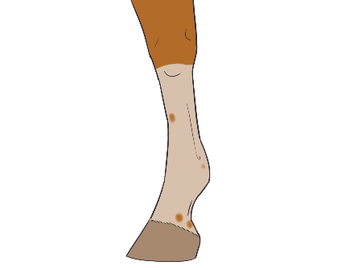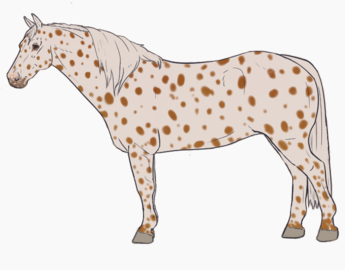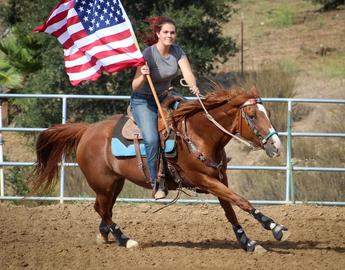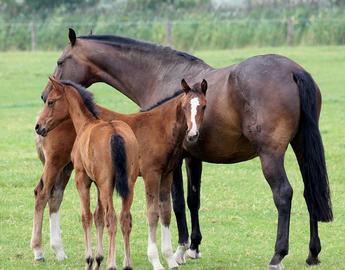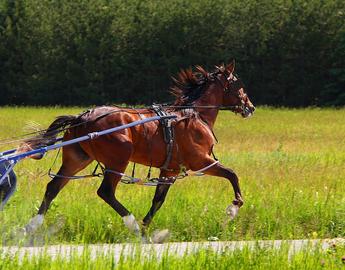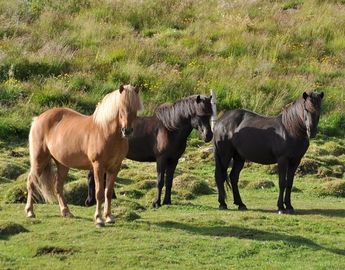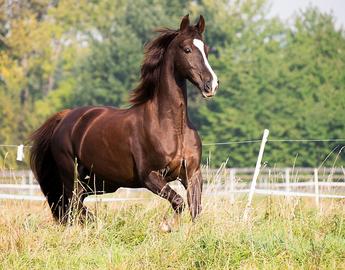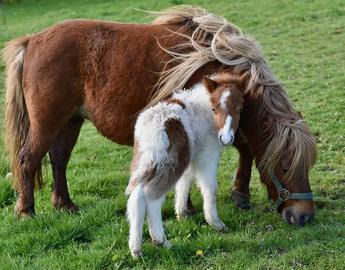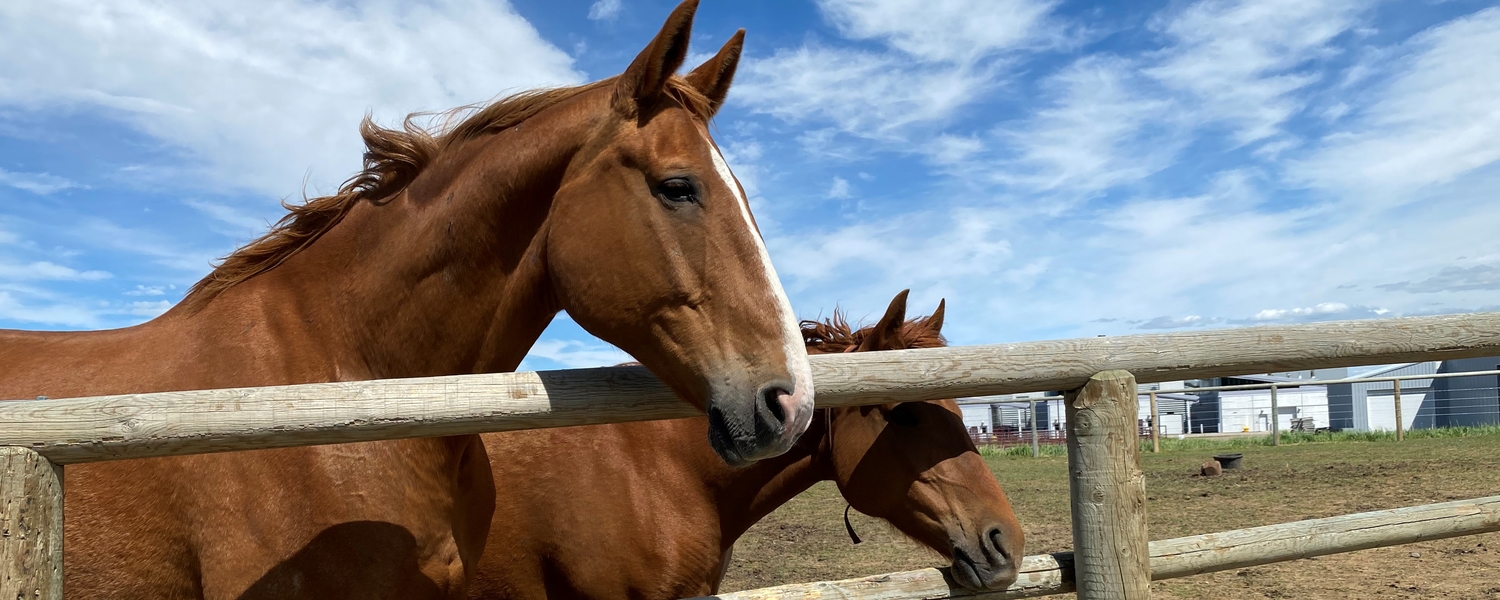
Equine Interaction

History of the Horse
Horses belong to a family of animals called Equidae and we often refer to animals in this family as equines. Other animals in this family include donkeys and zebras.
Horses were domesticated in Eurasia several thousand years ago and have had many different jobs including being utilized as transportation and livestock. Today in North America, horses are generally kept as pets or performance animals.

Equine Terms
Mare - an adult female horse
Stallion - an adult, uncastrated male horse
Gelding - an adult, castrated or “gelded” male horse (Note: Horses are usually considered adults after they turn 4 years old )
Foal – a horse under 1 year old
Filly – a female horse under 4 years old
Colt – a male horse under 4 years old
Hand – the main unit of measurement for a horse’s height in North America. A hand is equivalent to 4 inches. In some places, centimeters are used instead of hands.
Pony – a domestic horse 14.2 hands high or less
Equine Handling and Restraint
Equine Handling
Haltering, unhaltering, and leading horses are very critical skills. When working with horses, it is important to be very confident and sure of what you are doing. Although horses are usually very comfortable working with people, they are large prey animals that can be easily spooked or frightened if handled incorrectly. Learn how to safely handle a horse in the video below!
Equine Grooming
The Quick Release Knot
The quick release knot is a widely used knot in veterinary medicine because is it is a secure knot that can be easily released with one pull of a string in case of an emergency. Knowing how to tie this knot and release it correctly is very important, and thus could potentially save an animal from injury. Learn how to tie the quick release knot in the video below!

TIE YOUR OWN KNOTS
To practice your quick release knots you will need to use some of the rope found in your swag bag! The rope we suggest using for this activity is the thicker red rope. Look at the image the right for reference.
To practice this knot you can practice tying your rope around chair/table legs or fence posts.
Enjoy practicing your quick release knot!
Box Stalls
Watch the video below to meet our teaching horse Flash and learn how to safely put a horse in a box stall and stalks. Box stalls and stalks are common areas that a veterinarian will use to evaluate and treat a horse, so understanding how to safely use them is a really important skill. You will also learn how to brush a horse in this video.
Equine Stocks Handling
Equine Physical Exam
Equine Physical Exam
Physical exams are one of the most important skills in veterinary medicine. It is important to understand how to complete a physical exam on a horse. An equine physical exam differs from a small animal physical exam because there are many species differences that must be considered, such as the presence of a very large cecum. Learn some of the critical skills needed to complete a physical exam on a horse in the video below.

Equine Vitals
Just like when doing physical exams on dogs and cats, we are collecting information that we can compare to reference ranges to determine if those values or normal or abnormal.
Hoof Care, Testing & Lameness
Horses are high performance animals that are used for riding, competitions, work and many other activities. Therefore, the legs and hooves of a horse are very important. If they are not cared for, horses won’t be able to perform all of their important jobs! Even if your horse is just for riding, it is critical to provide them with hoof care to keep them happy and pain free. Lameness is an abnormal gait or stance; limping would be an example of this! Learn how to pick up a horse hoof, clean it and even complete a lameness exam in the video below!
Equine Injections and Radiographs
Injections and Radiographs
One of the main goals of veterinary medicine is to diagnose and treat an animal. One of the main diagnostic tools that are used is the radiograph or X-ray. Knowing how and where to give an injection is a valuable skill in equine medicine. Learn how to give an injection on a horse and how to take a radiograph on the distal limb of a horse in the video below! It is important to note that no radiographs were taken during this video. If they were, additional precautions and equipment would be needed to protect the handler and anyone in the background.
Horse Gaits
A gait is a way of moving and there are 4 standard gaits for horses: walk, trot, canter, and gallop. Gaits are defined by beats which are essentially the number of sounds you would hear when a horse’s feet hit the ground. So if two hooves hit the ground at the same time that counts as one beat!
Walk
The walk is the slowest gait and it has four beats. It is considered a symmetrical gait because the legs on both sides are doing the same thing. If a horse were to take the first step of a walk with their right hind leg, the pattern would be: right hind leg -> right front leg -> left hind leg -> left front leg.
Trot
This is the second slowest gait and it is also symmetrical. The trot has two beats. While trotting, horses move their legs in diagonal pairs. So, in this case the pattern would be: Left front leg and right hind leg -> Right front leg and left hind leg
Canter
This is the second fastest gait and it is asymmetrical. Because the gait is asymmetrical, the legs on either side of the horse are not moving in the same pattern. The canter is a three-beat gait. The pattern for a canter starting on the right hind leg would be: right hind leg -> right front leg and left hind leg -> left front leg. The front leg that hits the ground last is called the leading leg. So, in this case the horse would be on the left lead.
Gallop
This is the fastest gait and it is also asymmetrical. The gallop is very similar to the canter but it is four beats instead of three. Starting with the right hind leg, the pattern in the gallop would be: right hind leg –> left hind leg -> right front leg -> left front leg. Like in the canter, the gallop has a leading leg. This would also be considered the left lead.
Horse Gaits
Watch this video to see different horse gaits in action.

While there are many different horse colours, you can learn about most of them here!
All horses have one of three base colours. And on top of these base colours, we can have different modifications that change the body, mane, and tail colour!
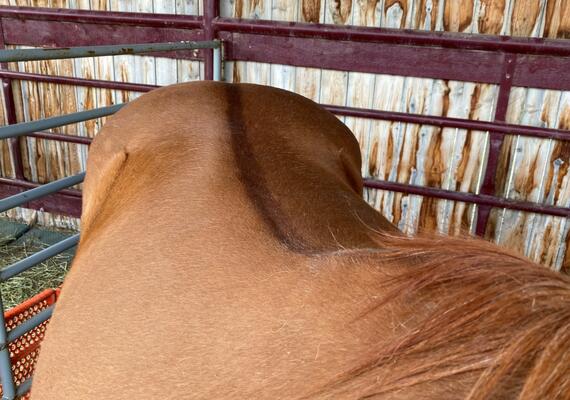
Like cream, dun also lightens the base colour!
To tell them apart from cream horses, dun horses have a dorsal stripe down their back! They will also sometimes have stripes on their legs, called zebra stripes, and down their shoulder, called a shoulder stripe”

Do White Horses Exist?
When you see a "white horse" standing outside in a pasture, did you know that the horse is actually considered to be a grey horse! Grey horses are often born a different colour (like black for example) and as they grow up they “grey out”. Many grey horses will continue to get lighter as they age, until they look almost pure white!
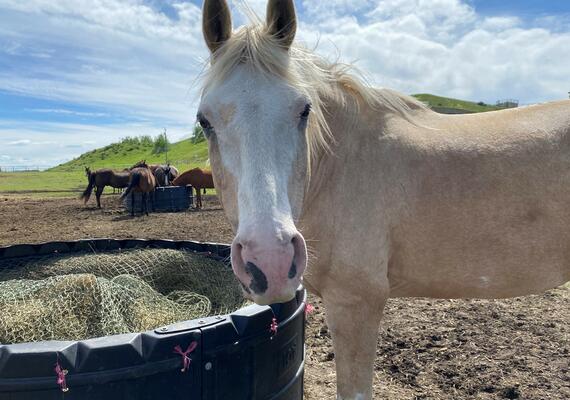
Horse Markings
There are a number of different white markings that a horse can have. The most common ones are restricted to the face or the lower legs but there are also white patterns that cover the body! If a horse has a lot of white on their face and lower legs, we may say that the horse has “chrome”.

DOMINANT WHITE
While most horses that appear white are grey, there is such a thing as a true white horse! We call this dominant white. Sometimes dominant white horses just have white patches and aren’t completely white. But when they are, we can tell them apart from grey horses because they are born white and have pink skin.

















